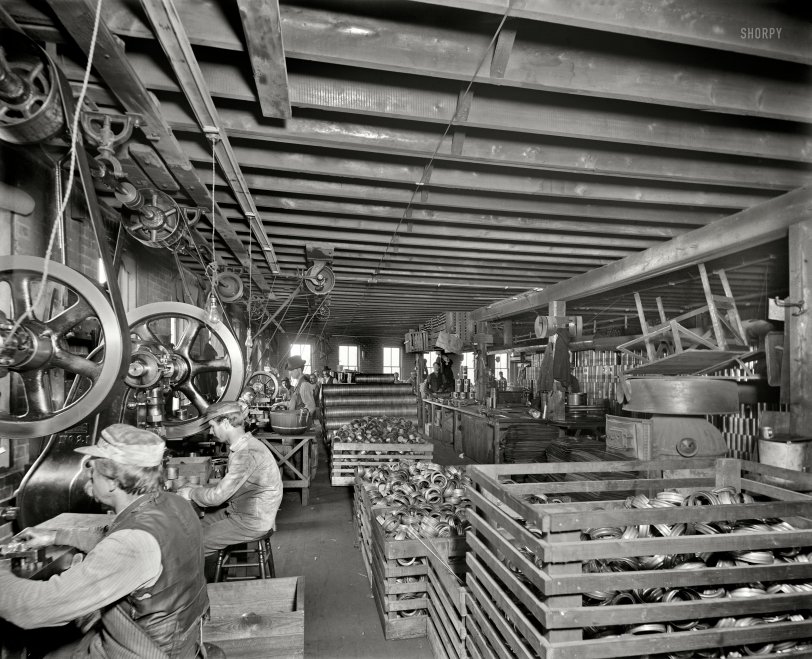


Framed or unframed, desk size to sofa size, printed by us in Arizona and Alabama since 2007. Explore now.
Shorpy is funded by you. Patreon contributors get an ad-free experience.
Learn more.

- Baldwin 62303
- Baldwin VO-1000
- Cold
- No expense spared
- Tough Guys
- Lost in Toyland
- And without gloves
- If I were a blindfolded time traveler
- Smoke Consumer Also Cooks
- Oh that stove!
- Possibly still there?
- What?!?
- $100 Reward
- Freeze Frame
- Texas Flyer wanted
- Just a Year Too Soon
- WWII -- Replacing men with women at the railroad crossing.
- Yes, Icing
- You kids drive me nuts!
- NOT An Easy Job
- I wonder
- Just add window boxes
- Icing Platform?
- Indiana Harbor Belt abides
- Freezing haze
- Corrections (for those who care)
- C&NW at Nelson
- Fallen Flags
- A dangerous job made worse
- Water Stop
Print Emporium
The Tank Room: 1901

Chelsea, Michigan, circa 1901. "Glazier Stove Co., tank room." Yet another glimpse of the inner workings at Glazier Stove. 8x10 glass negative. View full size.
The lighting...
...looks to me like standard knob and tube wiring, a venerable and now much-maligned way of doing things that conserved wire and did a good job of dissipating heat. The 'knobs' in this instance are two-conductor ceramic insulators rather than the more common single conductor knob.
It's hard to be certain how the luminaire is tied-in, but I'm betting that the thick spot near the round box is a soldered splice, carefully wrapped with rubberized tape where the insulation had been removed to make the join.
Clutching at straws
@Vintagetvs: clutches maybe? ["I can't seem to figure out how that one pulley in the center appears to be rotating but nothing else is?"]
Fire Bucket
In case of fire, fill bucket with 1 gallon of water, throw on flames, repeat as necessary.
[Those fire buckets were generally filled with sand. - Dave]
Line shaft drive with control arms.
The "main" line shaft is segmented, you can see two control arms (hanging down at about a 60deg angel) they're connected to a "throw out bearing" (note the Y connection at the bearings) these control arms engage/disengage the large driven pulley's. from the "live" main line shaft.
I recall that it took a special eye/touch to "throw" the control arms at the right time or else you got quite a kick off the control arm.
A great picture of old industry!
P.S. they don't make em like they used to!
Track Lighting
Exposed, rigid conductors, with movable clamps to pick the power off for each lamp. There really is very little that's truly new, eh?
You used to see a lot of it in Germany, often with the conductors at odd angles, but that's all low voltage. From the bulbs and the other fittings, I'd say this is "house current."
How come
the three guys nearest in the camera are able to carry on working whilst everybody else is intent on staring at the photographer.
Pulley system
I can't seem to figure out how that one pulley in the center appears to be rotating but nothing else is?
Wonder where the main power source is, off to the left out of view perhaps?
























On Shorpy:
Today’s Top 5